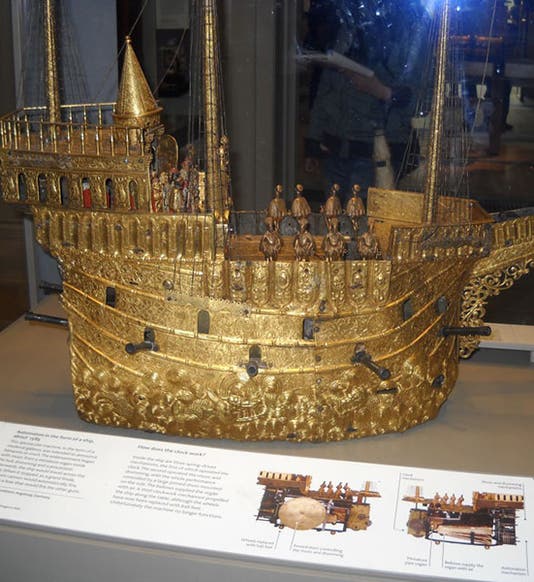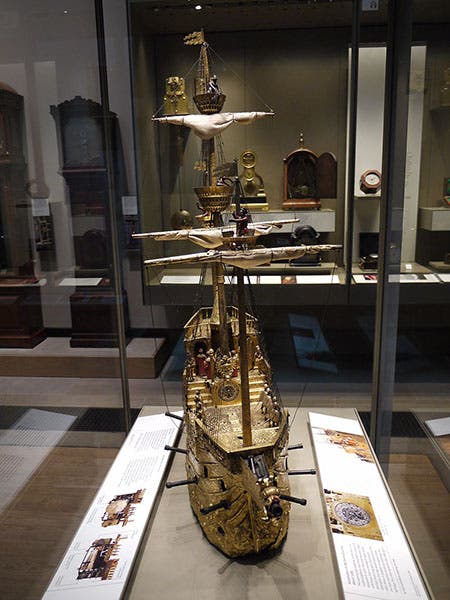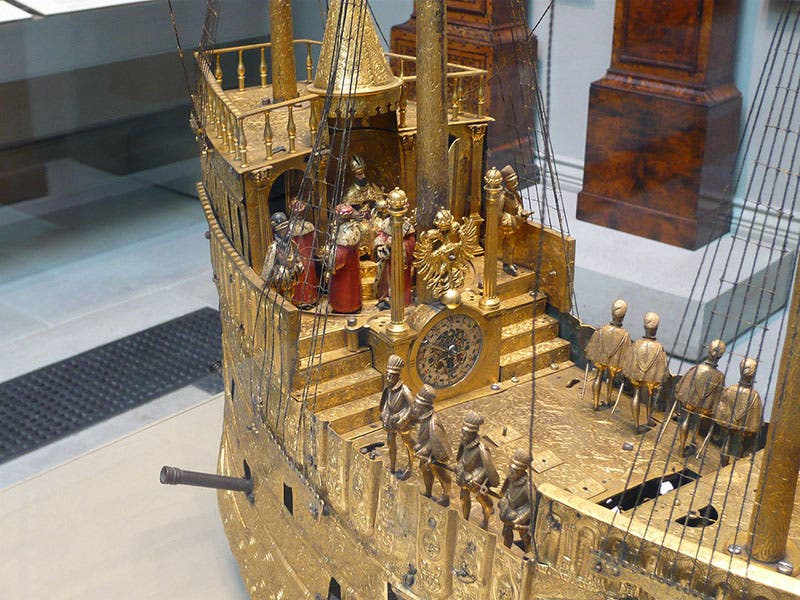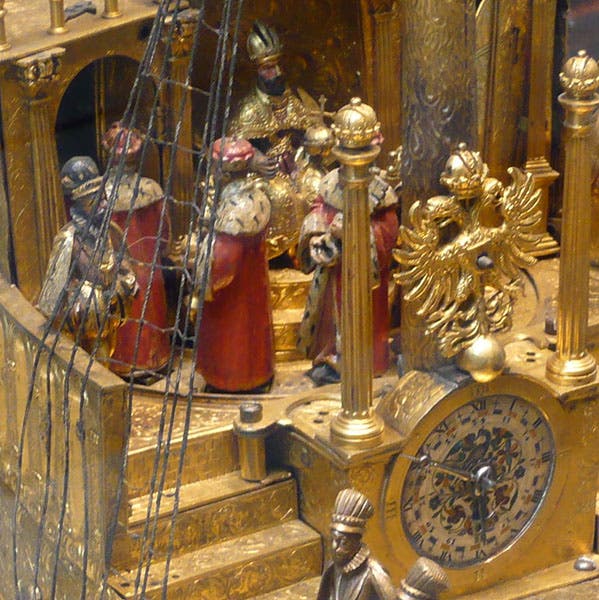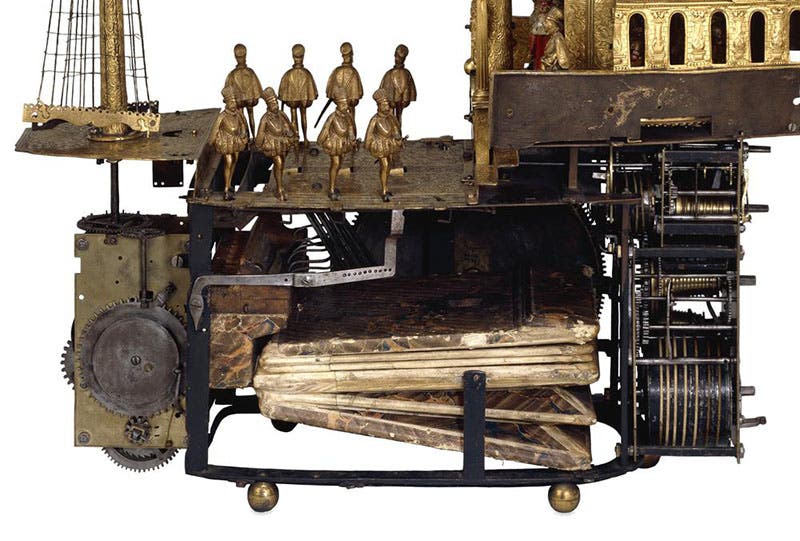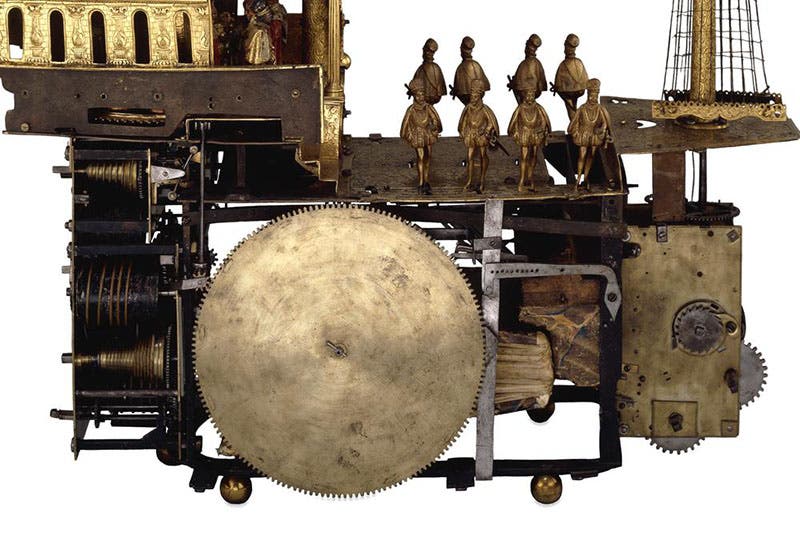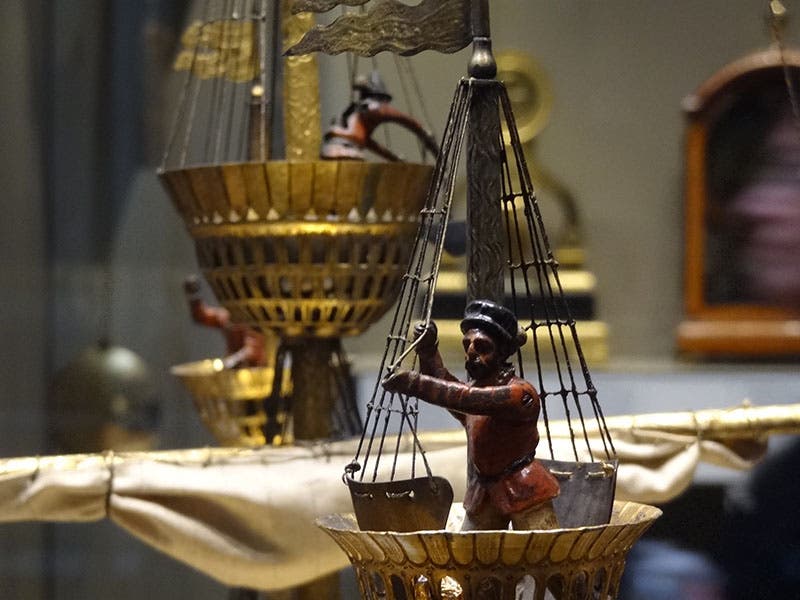Scientist of the Day - Hans Schlottheim
Hans Schlottheim, a German clockmaker working in Augsburg, was active in the 1580s, but we have no idea when he was born or died. We celebrate his life and creativity today because it seems high time somebody did so.
Schlottheim is known today almost exclusively for three clockwork ships that he built between 1585 and 1590. These three mechanical marvels survive and may be seen in the Château d'Écouen north of Paris, in the Kunsthistorisches Museum in Vienna, and in the British Museum in London. Since the British Museum example has been better photographed and studied, we will make it the focus of this discussion.
Schlottheim’s ship model is 31 inches long and 40 inches tall and was intended to sit on a royal table. It represents that staple of European navies in the late 16th century, the galleon, a ship built for both exploration and warfare. For some reason, such a table-top ship is usually called a nef, after the French word for galleon.
The British Museum nef is filled with clockworks driven by coiled springs that would have been wound daily. The nef originally had 4 wheels, and one clockwork motor would trundle it down the high table. Another clockwork provided the time (there is a clock face on the lower main-mast of the ship) and also powered two sailors in the crow’s nests of the main mast who rang the hours and quarter hours on tiny bells (last image). On the quarterdeck at the stern sat the Holy Roman Emperor, and as the ship moved along, the 7 Imperial electors glided past him and bowed when they came in front of His Majesty, who in 1585 would have been Rudolf II (fourth image, just above).
Meanwhile, on the main deck, there were 7 trumpeters and a drummer who played music, while inside the ship a small mechanical organ, the bellows of which was driven by yet another clockwork motor, contributed its share to the festivities (and a taut membrane on the ship's bottom provided the drumming surface for some mechanical hammers). When the ship reached the end of its table-top journey, the fore cannon on the bowsprit fired and ignited another ten small canons arranged around the ship, all of which were fully operational. The cannon explosions and a musical crescendo might have marked the summons to the feast, or perhaps a thunderous conclusion.
It is hard to imagine the awe that this trundling, melodic mechanical ship would have engendered in the dinner guests, or the skill that went into making it. The British Museum has provided on this webpage a number of photos of the underworkings of the nef; we include here one that shows the three clockwork motors at the stern and some of the connecting links and gears (fifth photo, above), and another from the opposite side (sixth image, just above). Four hundred and 35 years later, the wheels are gone, replaced by ball feet, and the on-deck trumpeters and drummer, long missing, have been replaced with copies of one of the heralds from the rear deck. And the mechanisms no longer work. But it is still by the accounts of those who have seen it a transcendently impressive piece of mechanical artistry.
When the British Museum some years back decided to select 100 objects from its collections to illustrate a history of the world, Schlottheim’s nef was one of the treasures chosen, a selection with which I whole-heartedly agree. But in the accompanying text, the curators chose to talk about the ship as a symbol of European expansion, the importance of mechanical marvels in generating wonder, the significance of late Renaissance patronage, and other grand topics. What they should have focused on is the amazing craftsmanship and ingenuity of Hans Schlottheim. I cannot fathom how this unsung artisan, using 16th-century tools and materials, could have built these clockworks, rigged them to produce such a variety of clever effects using just gears, cams, levers, and rods, and then covered all this machinery with beautiful copper gilding and populated the ship with such busy sailors, trumpeters, arquebusiers, and electors. And then repeated the whole thing twice more, for another elector, and then for the Emperor himself. If ever a man deserves to be celebrated for brilliant craftsmanship, it is Schlottheim. Sadly, as was the lot of most artisans, we know almost nothing about him, or where he lies now. Some 21st-century artisan should take it upon himself to make a mechanical wonder of a tomb ornament and install it somewhere in Augsburg, so that people like me could make a pilgrimage to pay homage to this unsung Renaissance master of mechanical miniatures.
Dr. William B. Ashworth, Jr., Consultant for the History of Science, Linda Hall Library and Associate Professor emeritus, Department of History, University of Missouri-Kansas City. Comments or corrections are welcome; please direct to ashworthw@umkc.edu.

